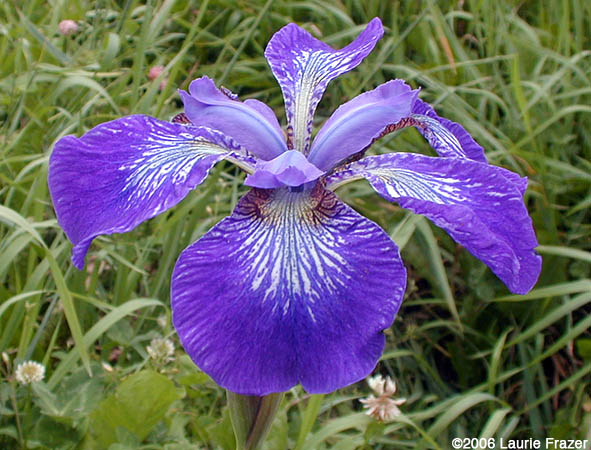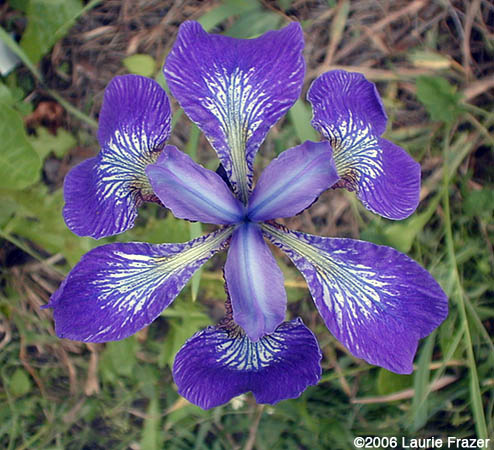

‘Kita-No-Seiza’ is a captivating and elegant Japanese Iris (Iris ensata), also known as an Ensata Iris. These irises are prized for their large, showy blooms and their graceful, often slightly drooping, falls. ‘Kita-No-Seiza,’ which translates to “Northern Star” in Japanese, lives up to its poetic name with its ethereal beauty.
This particular variety is often described as having blooms in shades of soft lavender or light purple, sometimes with hints of blue or pink. The falls, the lower petals, are typically the most striking feature, often displaying intricate veining or a subtle halo of deeper color around the edges. The standards, the upright petals, may be slightly lighter in color, creating a beautiful contrast. Japanese Irises are known for their beardless appearance, lacking the fuzzy beard found on Bearded Irises. Instead, they often have a prominent signal, a brightly colored area on the falls that acts as a beacon for pollinators. In ‘Kita-No-Seiza,’ this signal may be a contrasting shade of yellow or white, further enhancing the flower’s beauty.
Japanese Irises like ‘Kita-No-Seiza’ typically stand between 2-4 feet tall (60-120 cm), making them a striking presence in the garden. They prefer moist, slightly acidic soil and are often grown near water gardens or in boggy areas. Their elegant blooms and graceful form add a touch of serene beauty to the landscape, evoking the tranquility of a Japanese garden. ‘Kita-No-Seiza,’ with its delicate colors and poetic name, truly embodies the ethereal beauty of the Japanese Iris, a reminder of the quiet splendor of the northern stars.
American Iris Society Registration Data
- Description – S. absent; style arms medium to dark blue violet; F. multiple (6), medium to dark blue violet, large white signal, veined. Parentage unknown
- Hybridizer & Year of Introduction – Ho Shidara, 1997
- Classification – Siberian
- Bloom Period – Midseason
- Bloom Height – 28″
